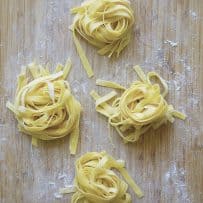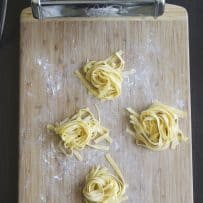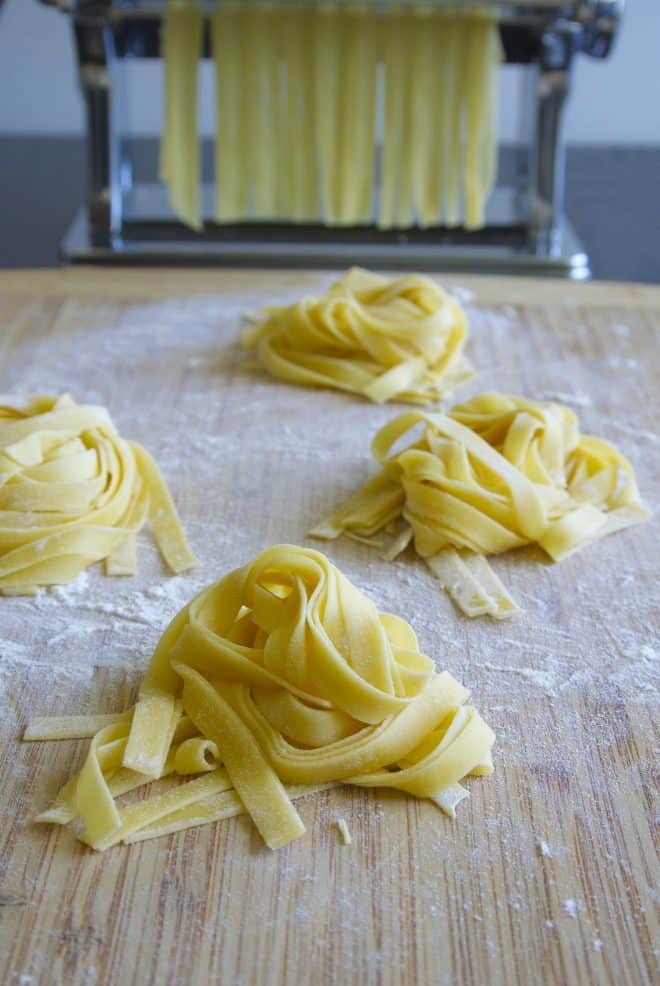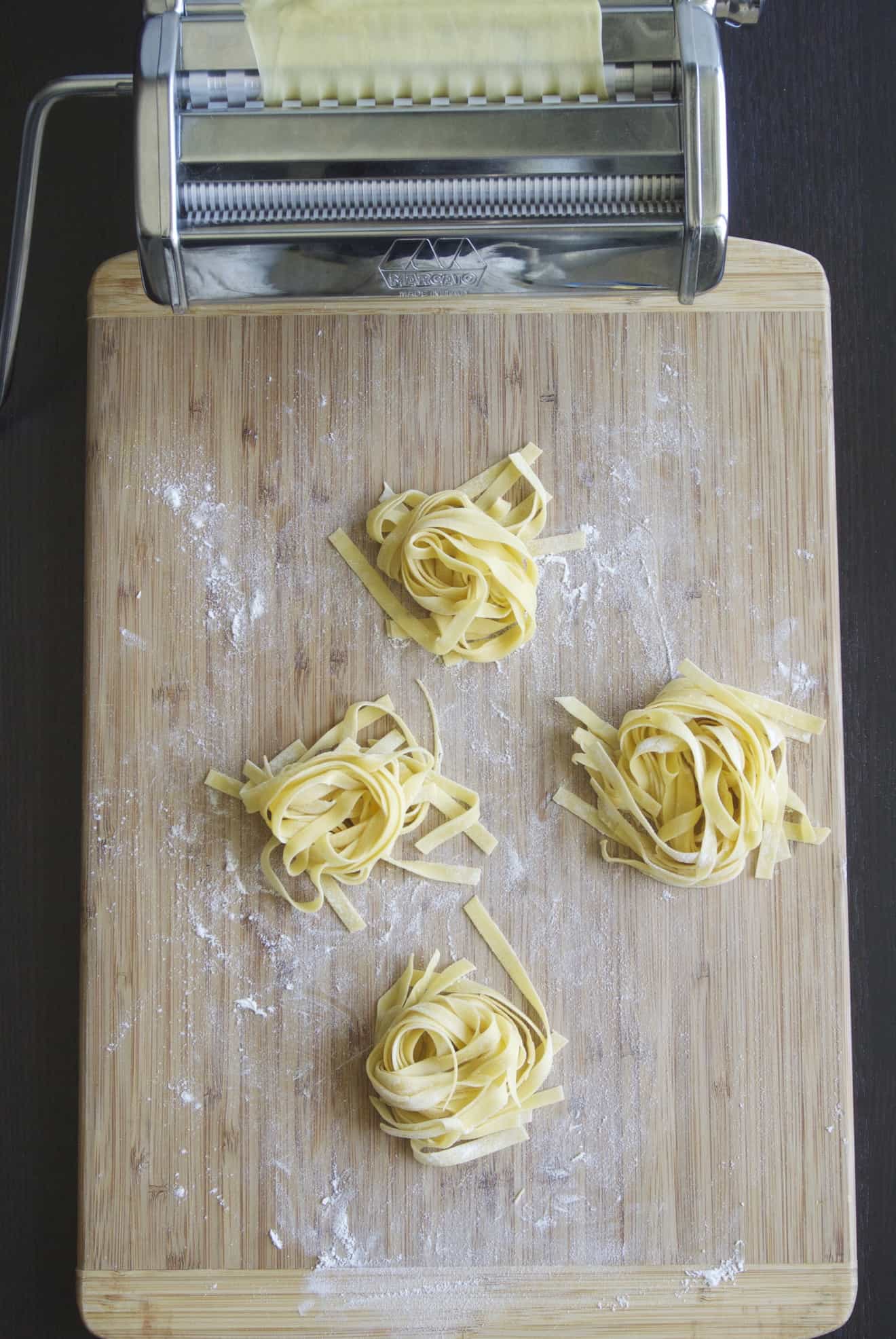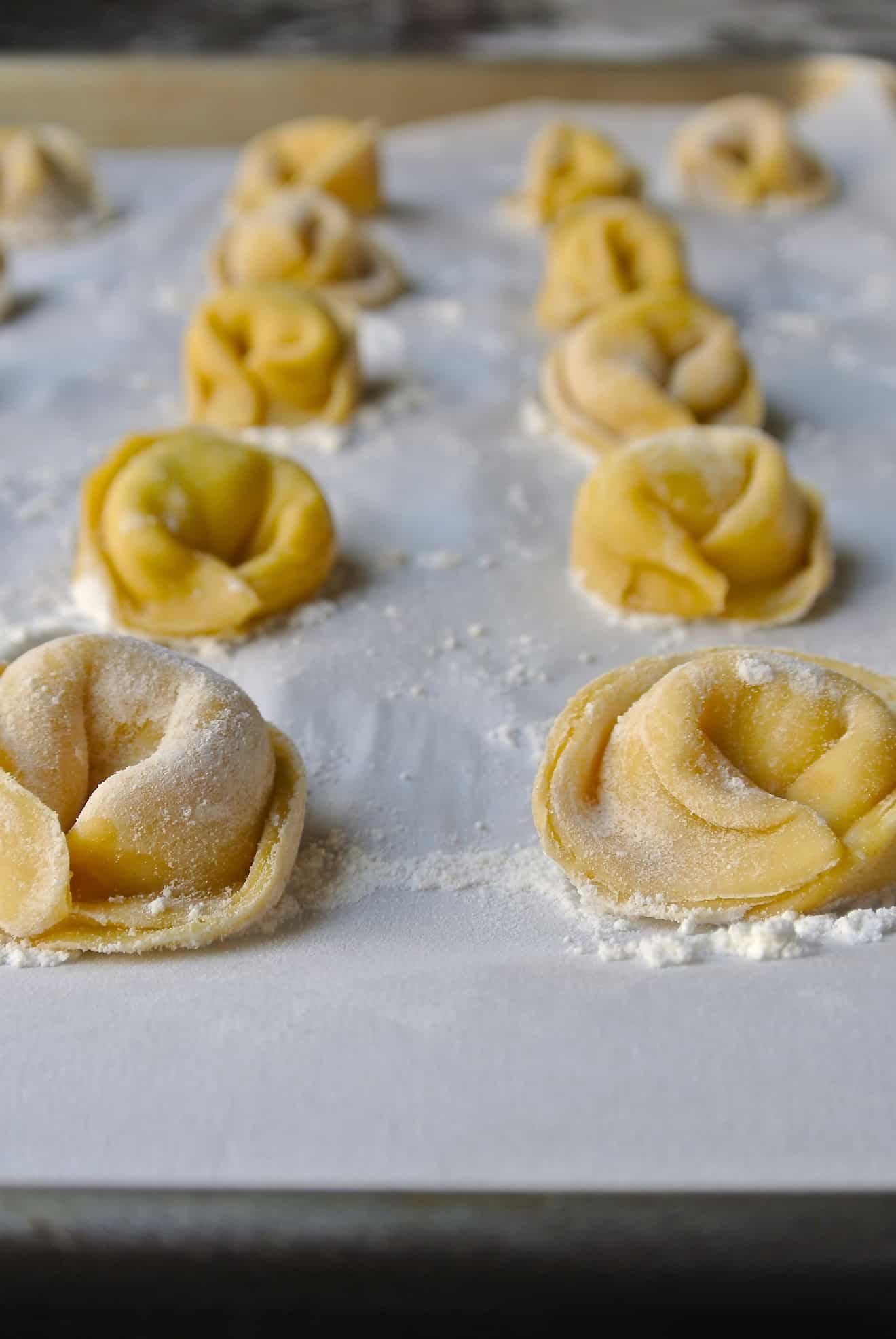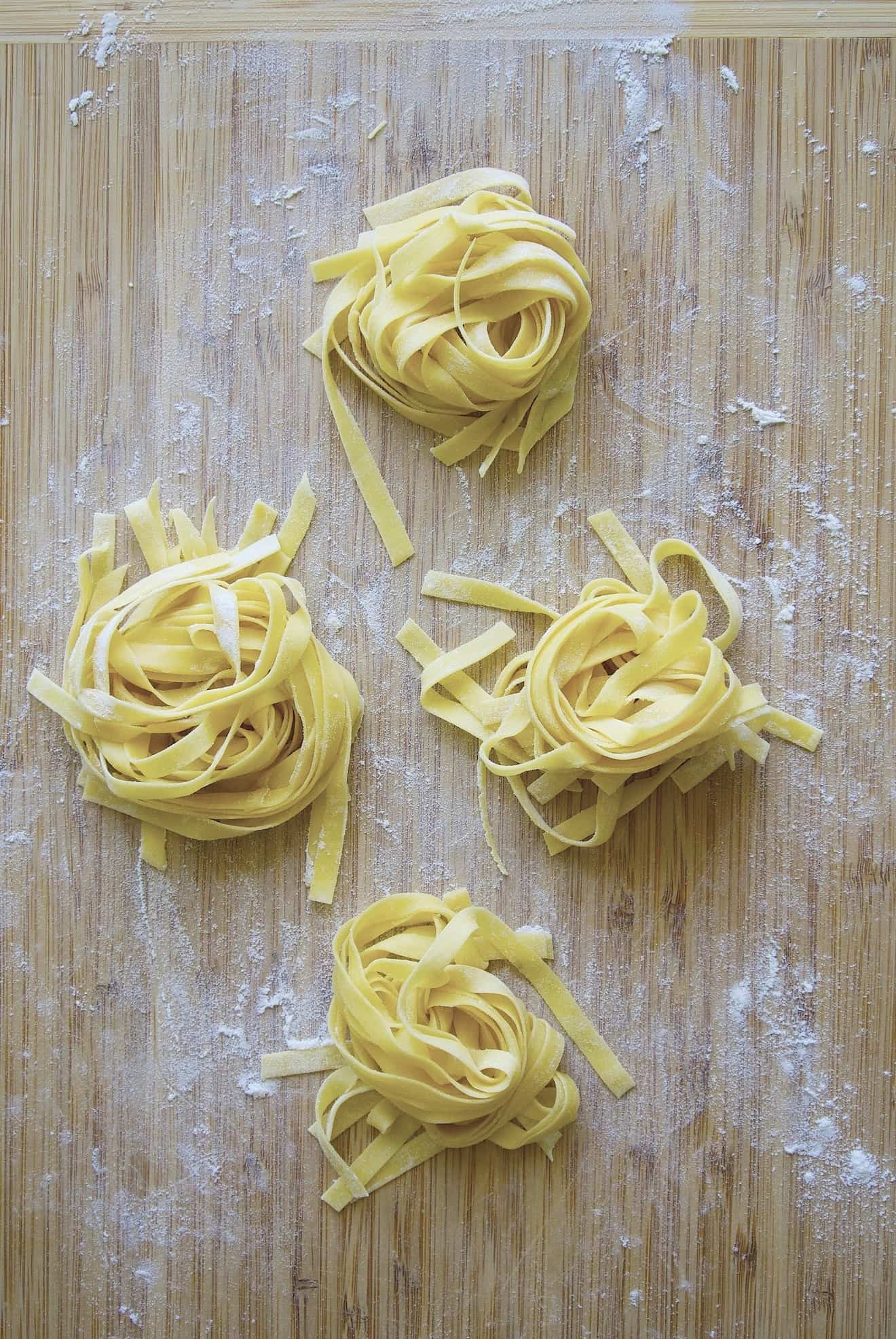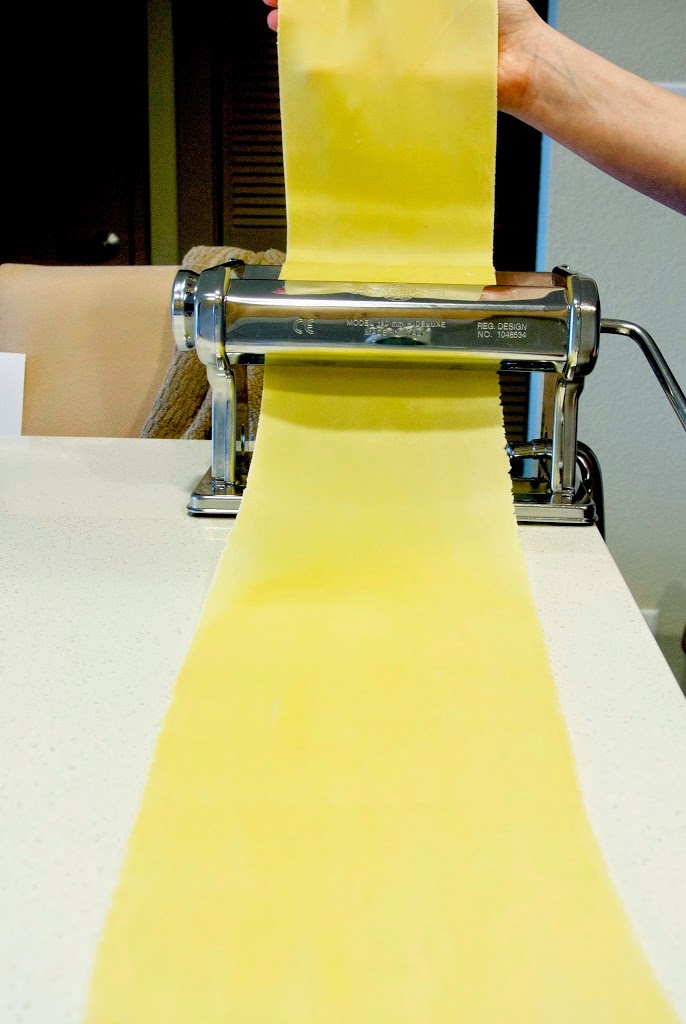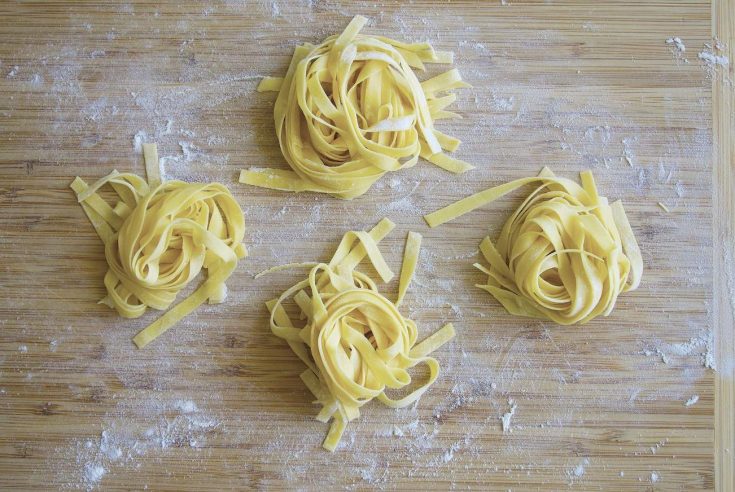When making homemade pasta, you start with one recipe and you can make any shape pasta you choose, from this tagliatelle to lasagne sheets and spaghetti. I love fresh pasta and my favorite is tagliatelle from my favorite region of Italy, Emilia Romagna. They are most famous for prosciutto from Parma, balsamic vinegar from Modena and Parmigiano Reggiano (Parmesan), so it is a great place for foodies to visit. I remember my last visit to Lake Como, my favorite snack was crusty bread, prosciutto and cheese all washed down with Chianti, it is heaven. Tagliatelle looks very similar to fettuccine, so what’s the difference you ask? Well, traditionally fettuccini are wider noodles traditionally served with creamy sauces, where tagliatelle is thinner and traditionally served with a Tagliatelle Bolognese Sauce. I find that cooking is an on-going learning process and the more you make a recipe, the more you learn. The last fresh pasta I made was tortellini and where I like the way it turned out, I found that adding olive oil and a little water makes for a softer, more tender dough.
How to Make Homemade Tagliatelle Pasta
The most effective way to make pasta is the old fashioned way. The way they have been doing in Italy for centuries. Just a surface and a fork. You make a well with the flour then add the eggs, salt, olive oil and water, then just mix until the dough comes together. Don’t use all the flour if you don’t need to, just use only enough for the dough to come together. As you see below, that’s how much flour I was left with. Kneading is key in getting great dough, if you can, knead for about 10 minutes. It’s quite a workout, but you’ll be left with a nice soft dough and as an added bonus your hands will feel soft from the olive oil. Now the dough needs a rest for 30 minutes. If you’re not familiar with rolling pasta dough, it’s quite simple. Starting with a small rectangle of dough, you run it through your pasta maker at the largest setting, #1. Once it comes out, dust lightly with flour then fold both ends into the middle. Run it through the machine again on the same setting, then repeat this 2 more times. After the 3rd time, turn the setting to 2, but don’t flour or fold the dough. Turn the setting to 3 and repeat and so on and so on until you reach the thinnest setting. Now your dough is ready to be cut. The dough will be long at this point, so lay it on your work surface and cut down to about 12 inches in length. Then run the dough through the thick cutting attachment of your pasta maker. Once the pasta is cut, lay out on a board and dust lightly with flour.
How to make homemade pasta without a pasta maker
After the dough has rested, take a small amount and roll out as thin as possible using a rolling pin to a rectangle of about 6-inches (15 cm) by 12 inches (30 cm) on a floured surface. Take the end closest to you and start to roll, it will be more of a flat roll. Using a sharp knife, slice from right to left (or left to right if you’re left-handed) into noodles. This will be the thickness of the pasta strands, so cut at least 3/16-inch (5 mm). The thickness is up to you.
Tagliatelle serving suggestions
Any light sauce is delicious mixed with this fresh pasta. I have a homemade Roasted Fresh Tomato Pasta Sauce or Easy Homemade Marinara Sauce that are perfect for fresh pasta.
On the heavier side, I have sage and cheese sauce or a creamy cheese sauce that I used in baked gnocchi with sage and cheese sauce. You can even use the pasta to make sheets for Lasagna Bolognese. The pasta is best used right away. If you want to store it, I like to portion out the pasta, put the in individual freezer bags and freeze for up to 3 months. Then you can just throw the frozen pasta into boiling water when you need it. This recipe yields 2 pounds/1 kg of pasta
Tagliatelle Pronunciation
Ta-lia-telleh If you’ve made this Homemade Pasta Tagliatelle or any other recipe leave a comment below. I love to hear from my readers!

